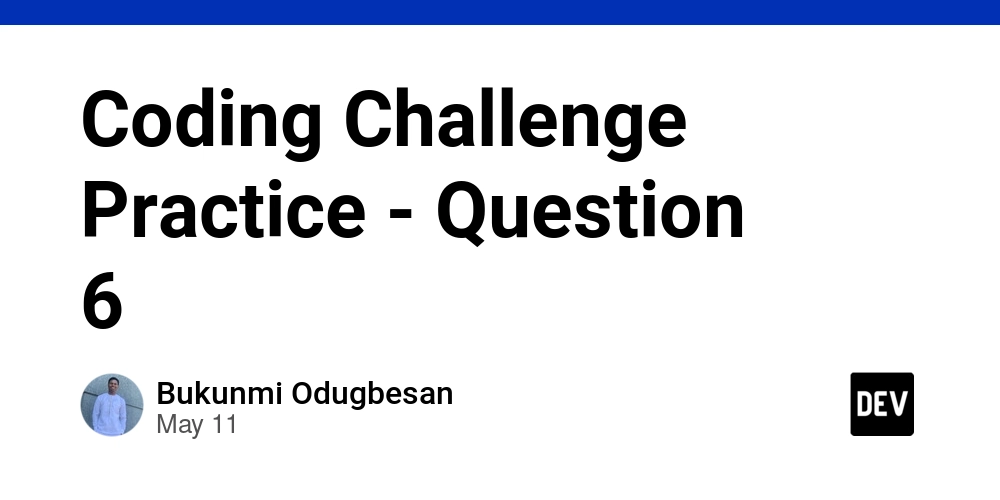The Core Architectural Components of Azure
The Core Architectural Components of Azure Azure, Microsoft’s cloud computing platform, comprises several core architectural components that work together to provide a wide range of services. It’s key components are: Regions and Availability Zones: Regions: Geographically distinct locations that contain multiple data centers and are designed to be isolated from each other to ensure fault tolerance and stability. Availability Zones: Physically separate data centers within an Azure region that are designed to be isolated from failures in other zone thereby providing high availability and redundancy. 2. Resource Groups: Logical containers used to group related resources (e.g., VMs, storage accounts, networks) for easier management, monitoring, and billing. 3. Azure Resource Manager (ARM): The management layer that handles deployment, management and organisation of resources using templates and policies. 4. Compute Services: Virtual Machines (VMs): scalable computing resources for running workloads. Azure Kubernetes Service (AKS): Managed Kubernetes service for containerrized applications. Azure Functions: Serverless compute service for running event-driven code. App Services: Platform-as-a-Service (PaaS) for hosting web apps and APIs. 5. Storage Services: Blob Storage: Object storage for unstructured data like text and binary data. File Storage: Managed file shares for cloud or on-premises deployments. Disk Storage: Persistent, high-performance disk storage for VMs. Queue Storage: Messaging store for reliable messaging between application components. 6. Networking: Virtual Network (VNet): Isolated, private networks in Azure. Load Balancer: Distributes incoming network traffic across multiple VMs. Application Gateway: Web traffic load balancer with additional features like SSL termination and web application firewall (WAF). Azure DNS: Hosting service for DNS domains. Content Delivery Network (CDN): Global CDN for delivering high-bandwidth content. 7. Databases: Azure SQL Database: Managed relational database service. Cosmos DB: Globally distributed, multi-model database service. Azure Database for MySQL/PostgreSQL: Managed database services for MySQL and PostgreSQL. 8. Identity and Access Management (IAM): Azure Active Directory (AAD): Cloud-based identity and access management service. Role-Based Access Control (RBAC): Fine-grained access management for Azure resources. 9. Security and Compliance: Azure Security Center: Unified security management and advanced threat protection. Azure Key Vault: Secure storage for secrets, keys, and certificates. Azure Policy: Service to create, assign, and manage policies for resource compliance. 10. Monitoring and Management: Azure Monitor: Comprehensive monitoring solution for collecting, analyzing, and acting on telemetry data. Azure Automation: Service for automating repetitive tasks and configurations. Azure Advisor: Personalized recommendations to optimize Azure resources. 11. Developer Tools: Azure DevOps: Services for CI/CD, version control, and agile planning. Visual Studio Team Services: Cloud-based version of Visual Studio for development and collaboration. 12. AI and Machine Learning: Azure Machine Learning: Cloud-based environment for training, deploying, and managing machine learning models. Cognitive Services: APIs for adding AI capabilities like vision, speech, and language understanding. 13. Internet of Things (IoT): Azure IoT Hub: Central message hub for bi-directional communication between IoT applications and devices. Azure IoT Central: Fully managed IoT SaaS solution for connecting and managing IoT devices. 14.Integration Services: Azure Logic Apps: Service for automating workflows and integrating apps, data, and services. Service Bus: Messaging service for connecting applications and services. These components collectively enable Azure to provide a robust, scalable, and secure cloud computing environment for a wide range of applications and services.

The Core Architectural Components of Azure
Azure, Microsoft’s cloud computing platform, comprises several core architectural components that work together to provide a wide range of services. It’s key components are:
- Regions and Availability Zones:
- Regions: Geographically distinct locations that contain multiple data centers and are designed to be isolated from each other to ensure fault tolerance and stability.
- Availability Zones: Physically separate data centers within an Azure region that are designed to be isolated from failures in other zone thereby providing high availability and redundancy.
2. Resource Groups:
- Logical containers used to group related resources (e.g., VMs, storage accounts, networks) for easier management, monitoring, and billing.
3. Azure Resource Manager (ARM):
- The management layer that handles deployment, management and organisation of resources using templates and policies.
4. Compute Services:
Virtual Machines (VMs): scalable computing resources for running workloads.
Azure Kubernetes Service (AKS): Managed Kubernetes service for containerrized applications.
Azure Functions: Serverless compute service for running event-driven code.
App Services: Platform-as-a-Service (PaaS) for hosting web apps and APIs.
5. Storage Services:
Blob Storage: Object storage for unstructured data like text and binary data.
File Storage: Managed file shares for cloud or on-premises deployments.
Disk Storage: Persistent, high-performance disk storage for VMs.
Queue Storage: Messaging store for reliable messaging between application components.
6. Networking:
Virtual Network (VNet): Isolated, private networks in Azure.
Load Balancer: Distributes incoming network traffic across multiple VMs.
Application Gateway: Web traffic load balancer with additional features like SSL termination and web application firewall (WAF).
Azure DNS: Hosting service for DNS domains.
Content Delivery Network (CDN): Global CDN for delivering high-bandwidth content.
7. Databases:
Azure SQL Database: Managed relational database service.
Cosmos DB: Globally distributed, multi-model database service.
Azure Database for MySQL/PostgreSQL: Managed database services for MySQL and PostgreSQL.
8. Identity and Access Management (IAM):
Azure Active Directory (AAD): Cloud-based identity and access management service.
Role-Based Access Control (RBAC): Fine-grained access management for Azure resources.
9. Security and Compliance:
Azure Security Center: Unified security management and advanced threat protection.
Azure Key Vault: Secure storage for secrets, keys, and certificates.
Azure Policy: Service to create, assign, and manage policies for resource compliance.
10. Monitoring and Management:
Azure Monitor: Comprehensive monitoring solution for collecting, analyzing, and acting on telemetry data.
Azure Automation: Service for automating repetitive tasks and configurations.
Azure Advisor: Personalized recommendations to optimize Azure resources.
11. Developer Tools:
Azure DevOps: Services for CI/CD, version control, and agile planning.
Visual Studio Team Services: Cloud-based version of Visual Studio for development and collaboration.
12. AI and Machine Learning:
Azure Machine Learning: Cloud-based environment for training, deploying, and managing machine learning models.
Cognitive Services: APIs for adding AI capabilities like vision, speech, and language understanding.
13. Internet of Things (IoT):
Azure IoT Hub: Central message hub for bi-directional communication between IoT applications and devices.
Azure IoT Central: Fully managed IoT SaaS solution for connecting and managing IoT devices.
14.Integration Services:
Azure Logic Apps: Service for automating workflows and integrating apps, data, and services.
Service Bus: Messaging service for connecting applications and services.
These components collectively enable Azure to provide a robust, scalable, and secure cloud computing environment for a wide range of applications and services.











































































































































































![[The AI Show Episode 156]: AI Answers - Data Privacy, AI Roadmaps, Regulated Industries, Selling AI to the C-Suite & Change Management](https://www.marketingaiinstitute.com/hubfs/ep%20156%20cover.png)
![[The AI Show Episode 155]: The New Jobs AI Will Create, Amazon CEO: AI Will Cut Jobs, Your Brain on ChatGPT, Possible OpenAI-Microsoft Breakup & Veo 3 IP Issues](https://www.marketingaiinstitute.com/hubfs/ep%20155%20cover.png)



































































































































































































































































_incamerastock_Alamy.jpg?width=1280&auto=webp&quality=80&disable=upscale#)
_Brain_light_Alamy.jpg?width=1280&auto=webp&quality=80&disable=upscale#)






























































































![Nothing Phone (3) has a 50MP ‘periscope’ telephoto lens – here are the first samples [Gallery]](https://i0.wp.com/9to5google.com/wp-content/uploads/sites/4/2025/06/nothing-phone-3-telephoto.jpg?resize=1200%2C628&quality=82&strip=all&ssl=1)




























































































